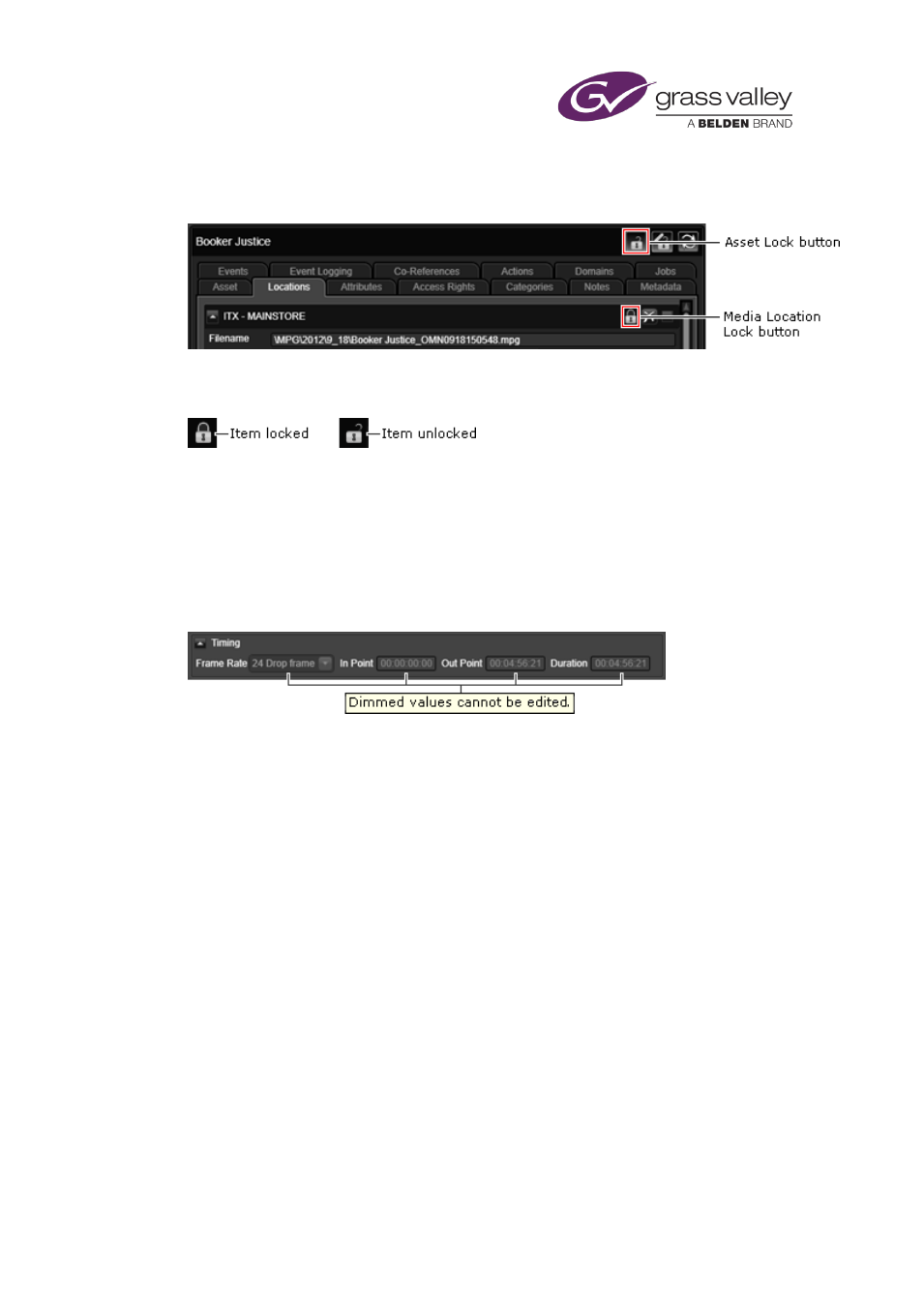Operations allowed with locked assets – Grass Valley iTX Desktop v.2.6 User Manual
Page 337

Preparing media items for playout
You apply or release a lock by clicking the Lock button in the header bar for the asset or
location:
The Lock button icon changes depending on the button’s state: a locked padlock identifies a
locked asset or media location; an unlocked padlock, an unlocked asset or media location.
The Lock button becomes active only when you can perform the operation indicated by the
icon. At other times, the button has no effect.
Operations allowed with locked assets
In general, none of the properties of an asset can be modified while the asset is locked. Values,
such as those for in- and out-points, appear dimmed in the Property Editor:
It is possible, though, to perform a number of operations that result in information being added
to the asset. Examples include adding and removing locations.
You may copy a media file that is referenced by one of the asset locations to a new location;
the new location is then added to the asset. This happens when you restore a file from an
archive to an iTX Media Store: the Media Store is added as a location to the asset. It also
happens when a proxy media file is created for an asset that has none, the proxy location is
added to the asset.
You may remove an unlocked media location from a locked asset. iTX deletes the media from
that location if it is not required by any other asset.
You may add keyframes to a locked asset that has none.
iTX can add transmission information – as-run details – to a locked asset that is used in a
playout channel.
You can add metadata to the source clips of published project clips (i.e. ones for which there
are media files).
Locked assets cannot be used in Workflow processes.
March 2015
iTX Desktop: Operator Manual
317
